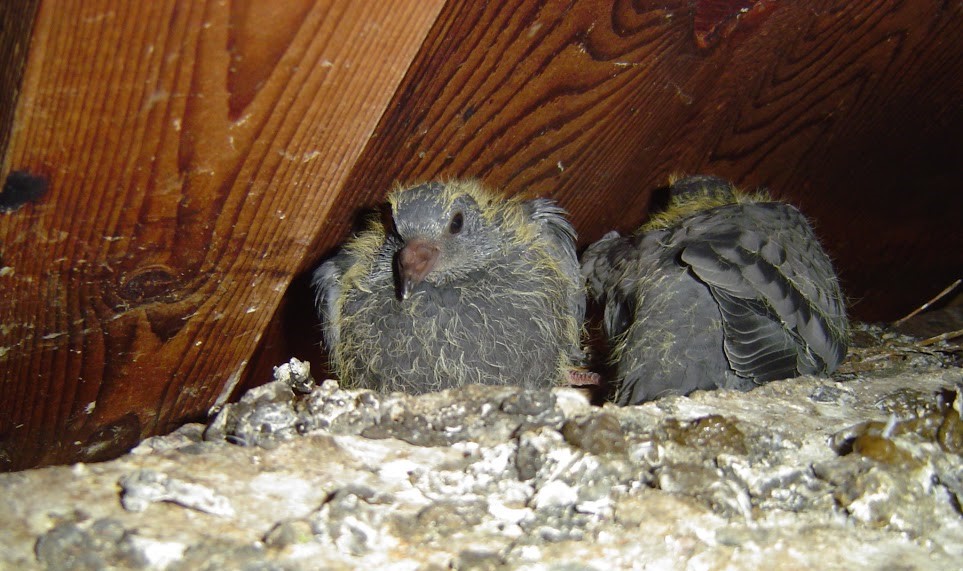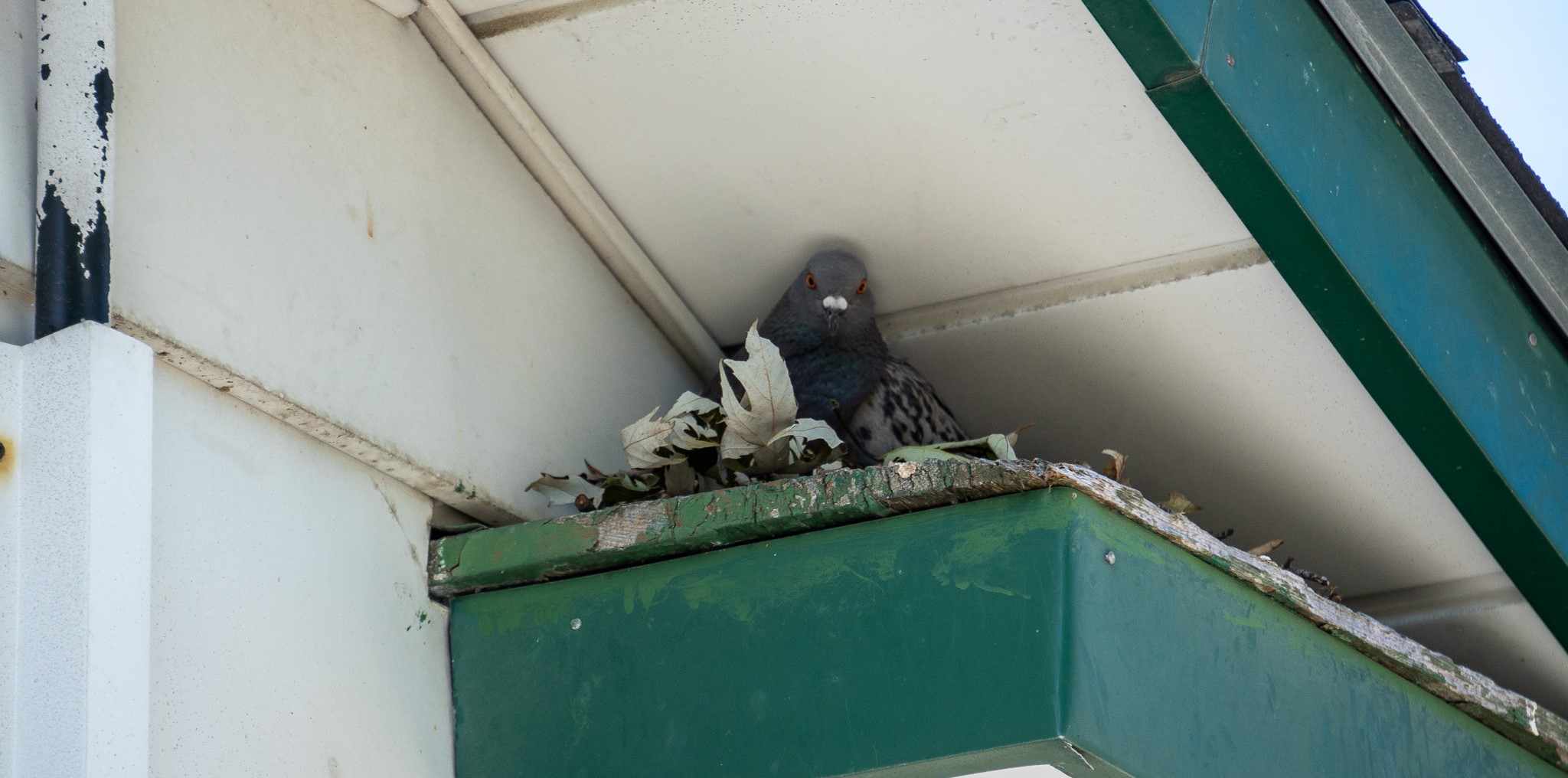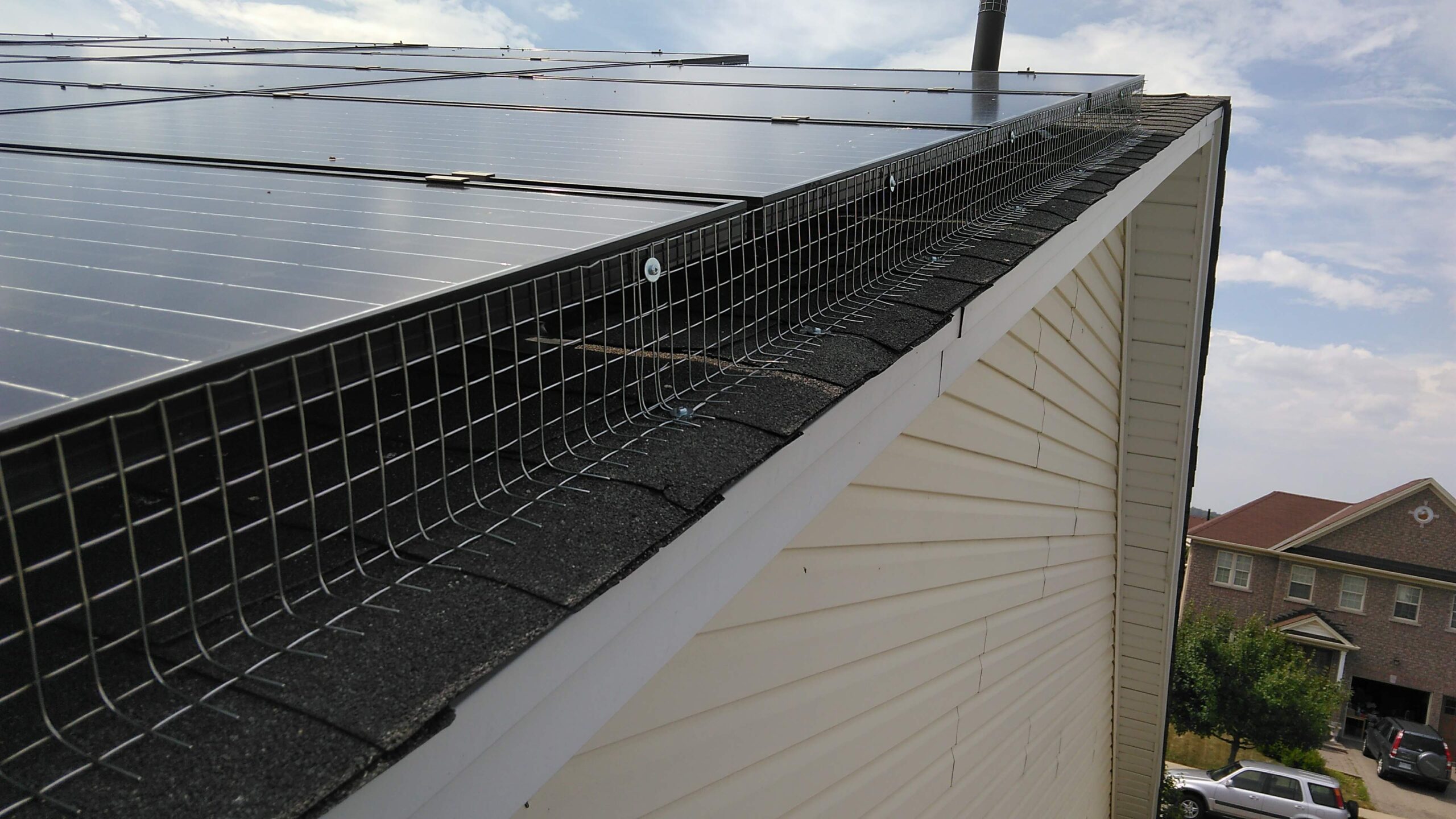BIRD REMOVAL PROCESS
Assess and Remove
The first step in resolving a nuisance bird issue is a thorough understanding of the exact nature of the problem. Our customized removal plans take into account the species of bird involved, the affected areas of the home and the time of year.
Clear and Clean
Birds can be messy, their nesting material and droppings can cause home damage and result in unsanitary conditions. As part of the process our trained technicians will remove nests from vents, soffits and balconies and safely scrub away unhealthy droppings.
Prevent and Protect
Our prevention plans are customized to address the specific bird threats your home faces. Our technicians are trained to install protective barriers and devices designed to make your home inhospitable to birds.

Birds are an integral part of our ecosystem, but when they start to encroach on our personal spaces, they can pose significant challenges to the tranquillity and safety of our homes and businesses. In Kitchener/Waterloo, where the lush urban landscape is punctuated by wildlife habitats, finding a balance between coexistence and control is imperative.
This page is tailored to the needs of home and business owners who encounter bird-related issues and suggests reliable methods to manage these encounters effectively, such as professional bird removal in Kitchener-Waterloo from Skedaddle Humane Wildlife Control.
The Charm of Kitchener-Waterloo
Located in the heart of the region, Kitchener and Waterloo are 2 cities that blend historical significance, technological advancements, and a strong community spirit. From the vibrant uptown core to the serene trails along the Grand River, it offers a diverse setting that attracts residents and migratory birds alike.
As we explore this dynamic locale, let’s delve into some fascinating facts that enhance its appeal.
Historical Name Change: Originally named Berlin due to its German heritage, the city was renamed Kitchener in 1916, during World War I, after British Field Marshal Lord Kitchener. This change reflected the city’s effort to demonstrate loyalty to Canada and the British Empire amidst anti-German sentiment.
Cultural Diversity: The Waterloo Region boasts the fifth-highest per capita immigrant population among all Canadian urban areas, making it a cultural melting pot within Canada. This diversity enriches the region with a wide array of cultural festivals, restaurants, and community events, reflecting a global tapestry of traditions and cuisines.
Pioneering Hydroelectric Power: Kitchener was the first community in Ontario to receive hydroelectric power from Niagara Falls. This historic milestone occurred on October 11, 1910, marking Kitchener as a leader in adopting innovative technology for municipal services.
These compelling narratives give this area a unique identity and influence the complex interactions within the wildlife community that resides in this bustling urban area.
Local Bird Concerns for Home and Business Owners
For residents of Kitchener-Waterloo, encounters with avian species are bound to happen sooner or later. Take a closer look into the types of birds that could potentially intrude on your property, giving you a heads-up on handling unwelcome guests.
Pigeons: Pigeons, often considered pests, are adaptable and frequent in urban environments due to abundant food and shelter. They are characterized by their homing instincts and can cause issues with their nesting sites and droppings, which can harbour diseases.
Starlings: Starlings, known for their impressive flocks, can be disruptive due to their noisiness and their communal roosting habits. They are cavity nesters and often exclude native species from their habitats.
House Sparrows: Similarly, House Sparrows have made a comfortable living in association with human habitation. Their nesting habits can lead to clogging of vents and damage to electrical systems.
The Impact of Bird Infestations
Bird infestations pose a multitude of challenges to both residential and commercial properties. These issues encompass a range of concerns that property owners must address diligently:
- Structural Damage: Infestations can lead to structural damage caused by nesting materials and the accumulation of droppings over time. The weight and acidic nature of droppings can deteriorate building materials, potentially compromising the integrity of the property.
- Health Hazards: The presence of droppings and nesting sites can pose significant health risks. These areas may contain harmful bacteria and fungi, which can be transmitted to humans through contact or inhalation. Proper precautions are necessary to mitigate the spread of diseases associated with avian infestations.
- Fire Risk: Dry bird debris, such as feathers and nesting materials, can be highly flammable. When located near electrical systems, the risk of fire increases substantially. Property owners must be vigilant in removing flammable materials to prevent potential fire hazards.
- Disruption and Aggression: Infestations can cause annoyance and inconvenience to occupants. Noise from these animals’ activities, messes created by droppings, and aggressive behaviour toward humans can disrupt the peace and safety of the environment. Swift action is essential to address these behavioural challenges effectively.
Addressing infestations comprehensively requires a proactive approach that considers the diverse implications these situations can have on property integrity, occupant health, and overall safety.
Preventing Incidents: How To Get Rid Of Birds
Prevention is the first line of defence when it comes to birds. Let’s address some practical measures that can be taken to discourage these animals from making your property their home. By implementing proactive prevention strategies, you can effectively protect your space and deter avian visitors.
Securing Entry Points: Identify and secure potential entry points that they can use to gain access to your building. Use materials like hardware cloth, bird netting, and specialized spikes to prevent them from roosting or nesting in these areas.
Minimizing Food and Water Sources: Keeping your property free from food waste, standing water, and other sources of nourishment can help deter them. Ensure that trash cans are sealed, pet food is stored indoors, and that there are no leaks in outdoor fixtures.
Landscaping: Strategically choose plants and trees less attractive to birds for their nesting and feeding needs. Prune landscape to prevent overgrown areas that can harbour nests.
Maintaining a Clean Environment: Regularly cleaning and maintaining your property is crucial. Droppings and nesting materials should be promptly removed and disposed of safely. Not only does this discourage them from roosting, but it also keeps the environment clean and safe for humans.
Taking proactive steps to prevent these animals from making your property their home is key. These simple measures go a long way in ensuring a bird-free environment while maintaining safety for everyone.

Skedaddle to the Rescue: Professional Wildlife Removal in Kitchener-Waterloo
When your usual preventative measures fall short and you find yourself facing persistent bird issues, it’s time to bring in the professionals. Look no further than Skedaddle Humane Wildlife Control to solve your problems.
We base our removal services on humane and eco-friendly practices. With our team of experts specialized in wildlife control and biology, we provide effective solutions that prioritize the welfare of both our clients and the animals.
Our approach to bird removal involves several critical steps:
- Inspection and Assessment: We conduct an in-depth analysis of your property to identify the species of bird, the extent of the infestation, and the underlying causes that attract them.
- Customized Removal Plans: Based on our assessment, we craft a specialized removal plan, incorporating techniques like trapping, one-way doors, exclusion barriers, and deterrents.
- Sanitization and Restoration: After the removal, our team ensures that your property is thoroughly sanitized, and any damage caused by these animals is repaired to prevent future infestations.

Your Path to a Bird-Free Environment
Taking flight from bird-related problems doesn’t have to be a daunting task. This comprehensive guide has equipped you with the knowledge and resources necessary to confidently manage avian encounters. By staying informed about common issues and employing effective prevention and removal strategies, you can secure a peaceful coexistence with the bird population in your region.
Remember, for those moments when feathered visitors overstay their welcome and standard tactics fall short, we at Skedaddle Humane Wildlife Control are ready to lend a hand. Our wildlife control in Kitchener-Waterloo is not just about eviction; we’re about restoring the balance between the beauty of birds and the sanctity of your space.
Your ability to protect your property from bird-related troubles reflects your commitment to maintaining a safe and healthy environment. With these insights, proactive steps, and the support of trusted professionals, you’re well-equipped to enjoy the splendid birdlife that flutters through the skies, without any unwelcome guests disrupting your home or business.
Bird Facts
FACT:
European Starlings are not native to North America – they were introduced in the 19th century and have since become known as nuisance birds, threatening other local populations in southern Ontario due to their intrusive and competitive behaviour.
FACT:
Starlings have a more communal approach to caring for their young, with several adults from the flock cooperating to feed and warm nestlings, while newborn pigeons rely primarily on the breeding pair.
FACT:
Pigeons have been associated with different cultural and symbolic meanings throughout history, representing love, peace and freedom in many different cultures.
FACT:
Canadian Geese are primarily herbivores, feeding mainly on vegetation such as grasses, sedges, aquatic plants, and agricultural crops. They are known to graze extensively on grassy areas, often forming large flocks while feeding
FACT:
Crows are highly vocal birds with a diverse repertoire of calls and vocalizations. They use different vocalizations for various purposes, including communication within their social groups, warning calls to alert others of potential threats, and territorial defense.





